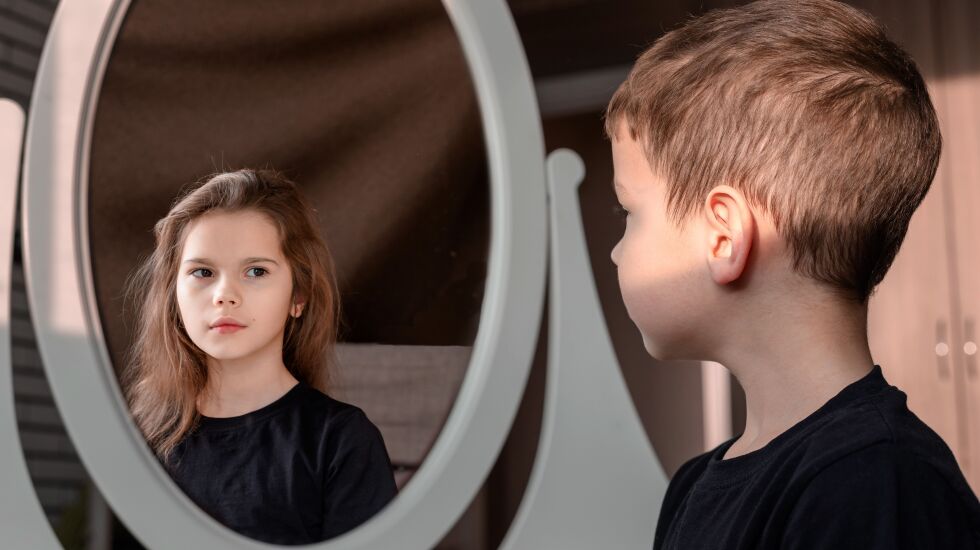
Imagine that you are the parent of a 15-year-old girl and discover that her school has been concealing her daytime behavior from you. Your daughter has joined a far-right Mormon spin-off cult, believes in plural marriage, has spoken of dropping out of school to get married and declines to participate in physical education because wearing gym clothes violates her religious beliefs. Is it possible to imagine that any public school would keep parents in the dark in a case like that?
Of course not. Yet, as The New York Times and others have recently reported, schools across the nation are keeping even weightier information from parents — namely, that their children are transitioning to the other sex during the school day and that teachers and others are referring to the student by a different name and permitting him/her to use the bathroom and locker room of the opposite sex. Jessica Bradshaw, one of the parents profiled by the Times, recounted that her daughter had been treated as a male at school for six months.
This is happening around the nation. Eighteen states, along with Puerto Rico and the District of Columbia, have adopted guidelines mandating inclusion and affirmation of students who say they’re trans. A northern California mother was stunned to discover that her sixth-grader’s school had been treating her child as trans for two years without her knowledge. “Basically, I was the last one to find out. They were all saving my kid from me.”
That’s the assumption of these policies — that children need protection from their parents. While there are circumstances in which parents are so violent or unstable that they might represent a threat to the child’s welfare, should that be the default assumption? Most parents love their children and try to do what’s best for them. That’s a constant of the human experience. As for teachers and school officials, they may care about kids, but they have other motives, like trying to navigate a bewildering landscape of changing identities without running afoul of formal or informal rules. While school officials may think they’re doing what’s best for kids by keeping transitions hidden from parents, they don’t have remotely the same interest in any particular student. Next year, the teachers will have another class, but the parents will still be the parents.
Advocates for “gender-affirming care” are vigilant, potent and feared, trashing anyone who raises questions about rushing into transition as hatemongers who are attempting to “erase” trans people. But their campaign to stifle debate is ebbing, which is healthy because, as independent journalist Jesse Singal has indefatigably reported, the research is actually quite weak on puberty blockers, cross-sex hormone treatment and other aspects of affirmative treatment. Several European nations, including France, Sweden and Finland, have drastically limited treatment with puberty blockers, and the largest transgender clinic in Great Britain has been closed due to controversy about unprofessional standards.
Health risks, mental health concerns
Britain’s National Health Service has warned that “gender incongruence ... may be a transient phase,” and yet the overwhelming majority of children treated with puberty blockers go on to all of the other aspects of transition. This should not be taken lightly. In many cases, it means a lifetime of being unable to achieve orgasm, and in nearly all cases, it means sterility. Lifelong use of hormones may increase risks of heart disease and cancer. Male-to-female transitioners have suffered from severe bone loss. For adolescents who later change their minds, the physical changes wrought by testosterone — facial hair, lower voice — are irreversible, to say nothing of the removal of breasts.
For children with true gender dysphoria, these trade-offs may be worth it, but for depressed or anxious teenagers who’ve been influenced by YouTube videos or friend groups to think they might be trans, it’s worrying in the extreme.
Many of the teenagers who present as trans have other issues — especially autistic spectrum disorder, depression and anxiety. It can be tempting for the patient to latch on to the trans identity, imagining that solving that will alleviate the other problems. But if gender dysphoria is not the primary disorder, drastic interventions would be a terrible mistake. It’s up to careful clinicians to tease out what’s really going on with the patient before issuing a diagnosis or prescribing life-altering drugs. A significant number of kids who declare a trans identity as teenagers rather than as children realize, with time, that they’re actually just gay.
It is fully possible for two things to be true: 1) that there are people with gender dysphoria who will lead happier lives as the other sex, and 2) that we are in midst of a fad that is sweeping up many kids who are not truly trans and will have their lives blighted by teachers, school administrators, physicians and others too bulldozed by political fashion to evaluate their individual cases carefully.
The sooner we come to terms with the latter, the better.
Mona Charen is policy editor of The Bulwark and host of the “Beg to Differ” podcast.
Send letters to letters@suntimes.com







